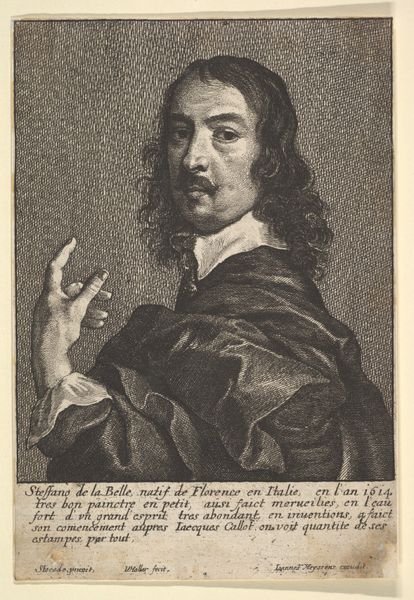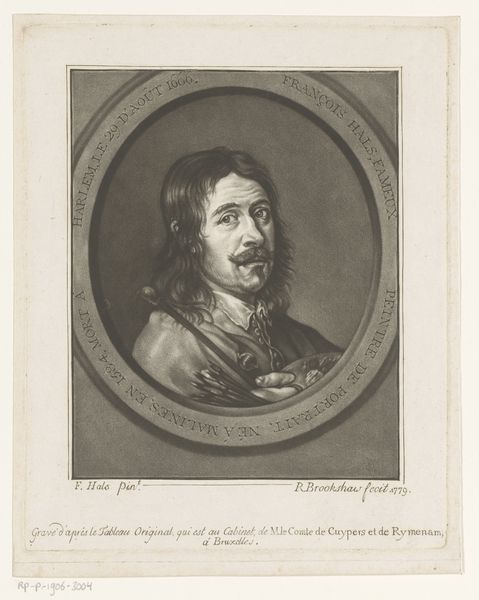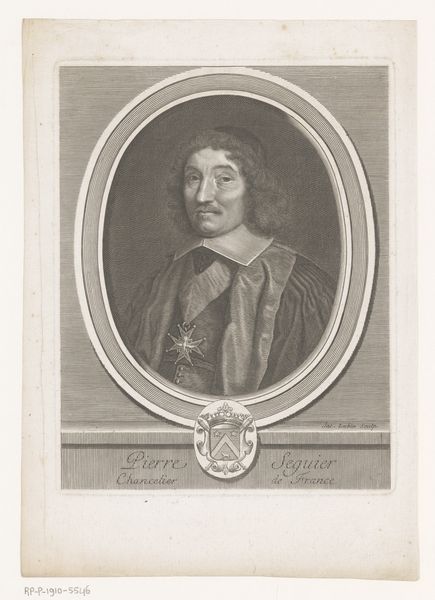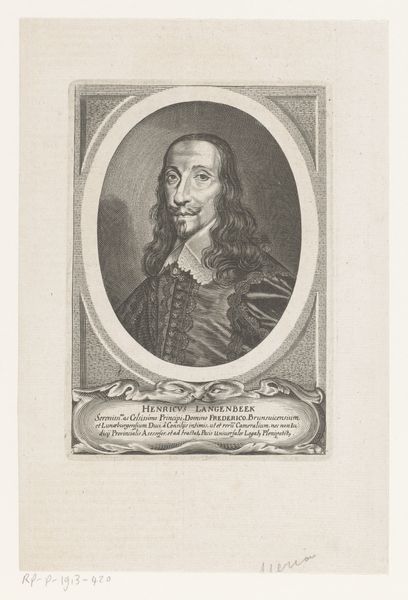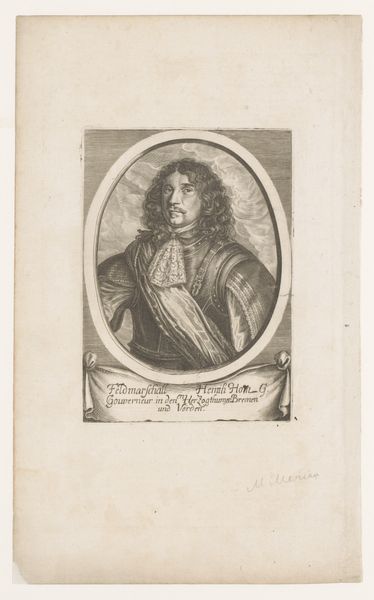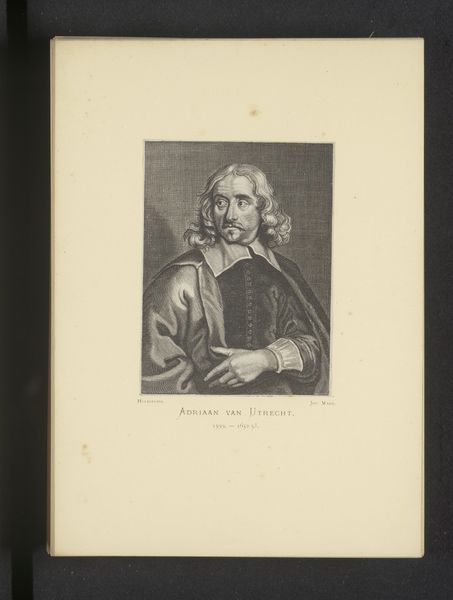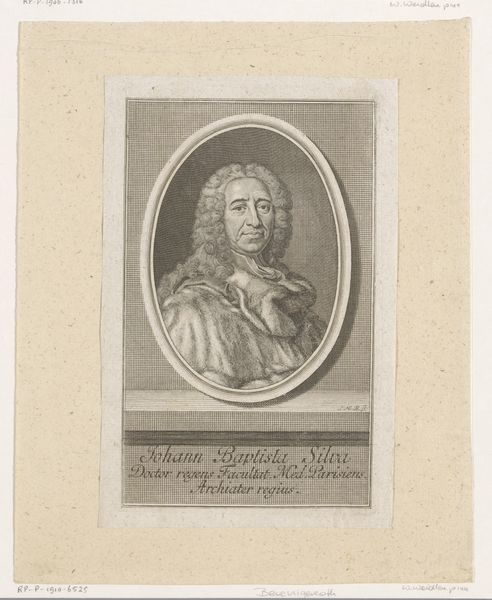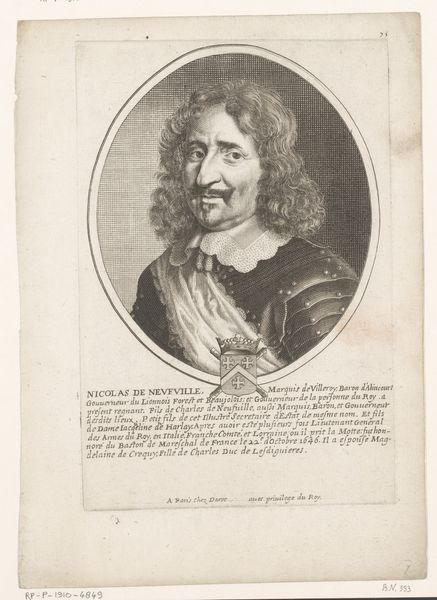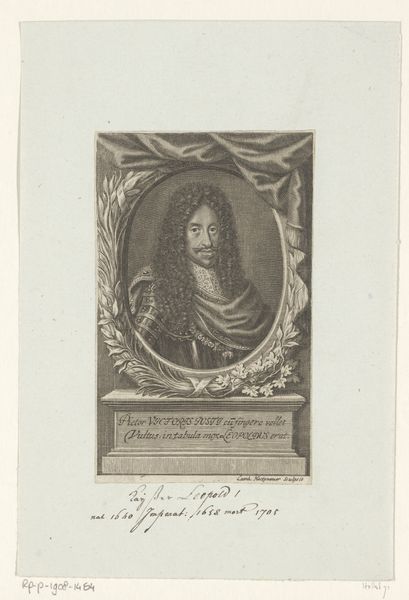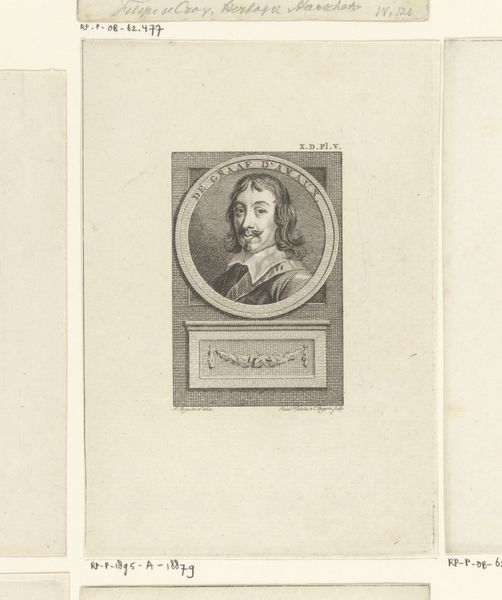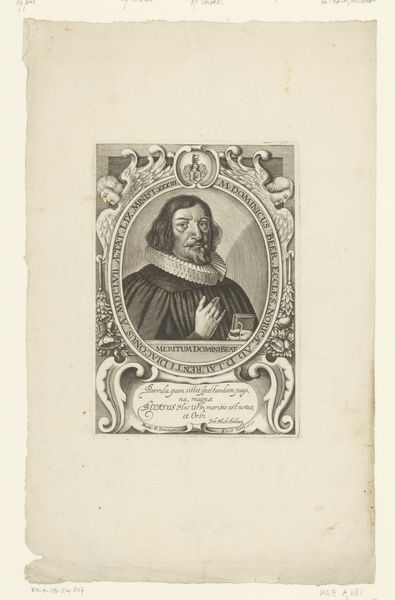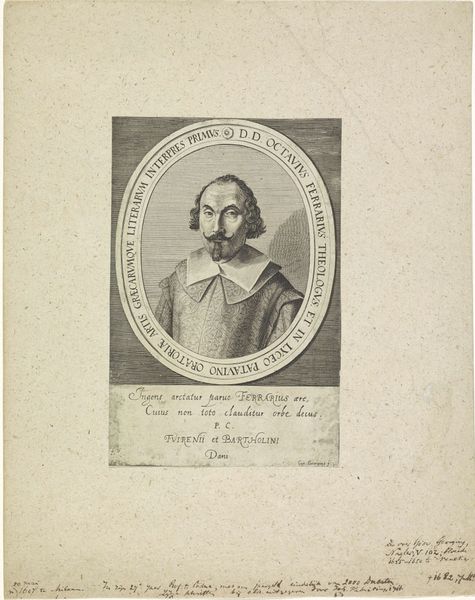
print, engraving
#
portrait
#
self-portrait
#
baroque
# print
#
line
#
engraving
Dimensions: 7 1/8 x 5 1/8 in. (18.1 x 13.02 cm) (sheet)5 3/16 x 4 1/4 in. (13.18 x 10.8 cm) (image)12 x 9 3/8 in. (30.48 x 23.81 cm) (mount)
Copyright: Public Domain
Curator: Here we have Wenceslaus Hollar's print of Steffano de la Belle, dating to somewhere between 1648 and 1650. Editor: My initial impression is one of elegance tinged with a slight melancholy. The chiaroscuro—that interplay of light and shadow—gives him a dramatic presence despite the small scale. Curator: Indeed. Hollar's work really places de la Belle within the context of the Baroque fascination with virtuosity. De la Belle was a prominent printmaker, celebrated for his detail. Hollar, positioning himself as a kind of art-world documentarian, secured a legacy here. Editor: Note how Hollar uses the technique of line engraving. It allows for such fine details in the hair and drapery. Also notice how the direction of the lines create tonal variations giving the image volume and form. Curator: He was clearly embedded in the artistic circles of his day, moving between various courts. Prints like these democratized access to art in a way that was unprecedented, and also worked as visiting cards amongst other printmakers, painters and buyers, building one’s networks of visibility, esteem, and commerce. Editor: Look at the way he's holding his hand; almost as though it's holding an invisible tool. The artist subtly signals the man's profession—the tool is his craft. It makes it quite self-referential. Curator: I'm intrigued by what seems like the handwritten note below the image, probably by the artist and most likely an invocation to an aesthetic judgement or some description of character, maybe regarding how de la Belle invented or adopted a compositional process learned from Jacques Callot and translated into prolific practice. It's difficult to discern all the nuances, but I see a world in motion. Editor: Ultimately, Hollar captures an intriguing blend of individual personality and social persona, making us consider how Baroque aesthetics helped forge a type and the very role of artmaking at the time. Curator: Yes, reflecting on it, one must acknowledge how Hollar's vision shapes, or maybe even constitutes, our perception of his peers' legacies. Editor: Agreed, what an interesting encounter this has been.
Comments
No comments
Be the first to comment and join the conversation on the ultimate creative platform.
